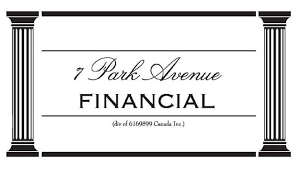|
Cash Flow Revolution: Why Canadian Business Chooses Asset Based Lending
Beyond Bank Loans: How Asset Based Lending Fuels Canadian Business Growth
YOUR COMPANY IS LOOKING FOR CANADIAN ASSET BASED LENDING!
You've arrived at the right address! Welcome to 7 Park Avenue Financial
Financing & Cash flow are the biggest issues facing business today
ARE YOU UNAWARE OR DISSATISFIED WITH YOUR CURRENT BUSINESS FINANCING OPTIONS?
CALL NOW - DIRECT LINE - 416 319 5769 - Let's talk or arrange a meeting to discuss your needs
EMAIL - sprokop@7parkavenuefinancial.com

WHAT IS ' ABL FINANCING ' , AND HOW DOES ASSET-BASED LENDING WORK?
Asset-based lending is a financing option for small and medium-sized businesses. Some of the largest corporations in Canada also use this form of flexible financing.
Loans are based on the business's assets rather than its credit history or other financial factors that might concern more traditional financial institutions.
Asset-backed financial financing solutions offer maximum flexibility for businesses looking to maximize growth opportunities, refinance, or manage a successful turnaround.
Firms experiencing rapid growth, restructuring or turnaround, and acquisition, merger or buyout are candidates for ABL loans!
Bridging Financial Challenges with Existing Resources
Many Canadian businesses face critical funding gaps despite owning valuable assets. These companies struggle to access traditional bank financing due to insufficient operating history, seasonal fluctuations, or recent financial challenges.
Let the 7 Park Avenue Financial team show you how Asset Based Lending transforms these underutilized assets into working capital, providing the financial breathing room businesses need without the constraints of conventional lending criteria.
Uncommon Perspectives on Asset-Based Lending
- While often associated with struggling companies, high-growth businesses frequently utilize asset-based lending that must finance rapid expansion without diluting ownership through equity financing.
- Asset-based Lending can improve financial discipline within a company, as regular reporting requirements encourage better asset management practices and financial transparency.
ASSET BASED CREDIT LINE STRUCTURE
A typical loan structure in Asset-based lending is a revolving loan or business line of credit. This means it’s available when needed and can be paid down as cash inflows occur in your business. Asset-based lending is perfect for companies with irregular income or expenses and can provide the capital needed to exploit opportunities.
HOW ASSET BASED FINANCING WORKS
'ABL ' Asset-based financing assesses the value of your assets as collateral.
This means businesses with less than perfect credit histories or external collateral often required by banks can still get what they need in terms of day-to-day funding for cash flow and working capital needs such as payroll expenses -
The bottom line is that Asset-based financing is a good option for businesses with sales and assets—it's as simple as that.
THE ABL APPLICATION PROCESS IS QUICKER AND SIMPLE
Asset-based loans are a much simpler alternative to traditional debt because they don’t require many of the requirements of conventional bank financing, including extensive covenants, focus on personal guarantees and personal net worth, etc.
Getting approved for an asset-based loan can take 30 to 90 days, depending on the complexity of your business. During those 30 to 45 days, an asset-based lender conducts reviews and potential appraisals on any collateral that needs examination to determine its value.
Asset-based lending is a loan based on the value of a business's assets rather than its credit history. Financing is easier to qualify for if your company has assets and sales revenue.
A business can get an asset-based loan by pledging multiple forms of its highly liquid assets, typically accounts receivable and inventories. However, physical assets/ equipment and even company-owned commercial real estate can also be provided as collateral for your ongoing ' borrowing base'.
ABL lenders determine loan amounts based on a percentage of the face value of sales and assets.
WHAT FACTORS DETERMINE LOAN AND LINES OF CREDIT AMOUNTS
Various factors determine a lender's advance rate and the actual cash they provide to their borrowers, but the key point is that the more liquid the assets are, the higher the advance rate will be. That is how ABL works, the asset value focus - with fewer covenants as one of the key takeaways.
Other considerations include how long it will take a company to turn its assets into cash.
Conversely, if those same assets were non-liquid (such as equipment or real estate), then the advance rate would be lower but still part of your facility since it would take longer for that company to sell those assets to repay its loan.
An asset-based loan is a percentage of the combined value of your accounts receivable, inventory, equipment, and, in exceptional circumstances, real estate.
Key benefit - This allows your company to quickly turn its assets into working capital and access flexible funding. More importantly, with an asset-based loan, as your company’s operations and assets grow, so does the available funding.
WHAT ARE THE KEY ADVANTAGES OF ASSET BASED FINANCING
An asset-based loan is a type of loan secured by a company's assets. Its main benefit is its flexibility, which can be helpful for companies experiencing difficulties or having credit issues.
Other benefits of using an asset-based loan include less strict qualification requirements and a shorter approval process.
In an asset-based relationship, lenders will require frequent reporting in the form of weekly borrowing bases or monthly reports. The reality is thought that this often helps to maintain discipline with companies. Consistent and frequent reporting can help keep the asset-backed loan lender and borrower accountable.
Companies in an asset-based lending relationship tend to develop better cash management and overall financial reporting practices, leading to a more streamlined and efficient company.
WHAT ASSETS COMPRISE THE ASSET-BACKED LOAN?
Asset-based lenders typically advance money against accounts receivable, a very liquid and desirable asset. However, this doesn't mean lenders don't aggressively advance on other collateral types, including inventory, equipment, and the aforementioned real estate, if applicable.
Accounts receivable, product inventory, machinery, specialized equipment, buildings and real estate are common assets used to secure asset-based loans. Accounts receivable financing for your outstanding invoices is the most common component of asset-backed loans, and factoring companies are a subset of a broad range of asset-backed financing solutions.
In some cases, a term loan structure might be implemented, where the lender loans a set amount of money that must be repaid over a fixed time on a specific asset.
There has been a rise in specialized asset-based lenders focusing on one particular type of collateral. These lenders are experts in their field and have an added appetite for specific collateral after years of lending to that type of asset.
Intellectual property is a less common additional collateral type. Most traditional lenders ignore this asset.
FLEXIBLE TERMS!
Asset-based loans are typically structured over 1 year with renewal options. One reason is that asset-based lenders seek to be more of a transitional credit provider where the company they are lending money to is in the middle of a transition period.
An asset-based loan can provide stability and growth for a company.
SHOULD YOUR BUSINESS CONSIDER AN ASSET-BASED LOAN
Asset-based loans are an excellent way for businesses to acquire growth capital. Small and midsize companies can find great value with an asset-based loan in growth, turnaround, or acquisition mode. Asset-backed financing is ideal for companies with assets in their balance sheets, including accounts receivables, inventory, or fixed assets.
IS YOUR COMPANY AND INDUSTRY A GOOD CANDIDATE FOR ABL LOANS?
Asset-based lenders are more likely to work with many capital-intensive businesses, which are prime candidates for this type of funding. Distributors and manufacturers are typically good candidates for asset-based lending. The stronger the collateral pool, the more attractive a company is to an asset-based lender.
Businesses in industries with expected seasonality/ seasonal fluctuations can also benefit from the fluid aspect of an asset-based loan. Other long-standing industries that participate in asset-based lending include retail, apparel, staffing and business service companies that extend credit to their customers.
Fast and Flexible Financing for Business Growth
Asset-based loans can be a quick and flexible way to boost your growth. This type of Canadian business financing uses some of your company's valued assets and sales revenues as collateral for the funds, which provides your firm with flexibility with repayments while still providing working capital and cash flow access for greater credit availability.
Focus on Assets, Not Credit History
Asset-based lenders are less concerned with your firm’s credit history, current cash flow, or overall profitability. The focus? If a borrower defaults, it’s all about the value and liquidity of the collateral you provide. To qualify for an asset-based loan, you generally only need good-value sales and assets to get started.
Unlock the Value of Your Business Assets
Asset-based loans are a form of financing that leverages your company's valuable assets. Unlocking the value of those assets and providing you with the funds you need to grow or sustain your business is the ABL solution deliverable!
Case Study: Canadian Manufacturer
A Canadian metal fabrication company with 45 employees faced a critical challenge when a major new contract required significant raw material purchases before payment terms would deliver cash flow. Despite having $3.2 million in equipment and $1.8 million in existing inventory, their traditional bank declined additional financing due to recent investments that had temporarily reduced profitability.
By implementing an asset-based lending solution, the company secured a $2.5 million facility within three weeks, receiving an 80% advance rate against accounts receivable and 60% against inventory. This provided immediate working capital of $1.7 million without requiring additional personal guarantees.
CONCLUSION
Call 7 Park Avenue Financial, a trusted, credible, and experienced Canadian business financing advisor who can show you that asset-based financing is a great option for businesses that want to maintain control over their assets while still obtaining the capital they need to succeed.
FAQ: FREQUENTLY ASKED QUESTIONS / MORE INFORMATION
WHAT IS THE DIFFERENCE BETWEEN ASSET-BASED LOANS AND UNSECURED BANK LOANS?
Asset-based financing, through asset-based loans (ABL), leverages a borrower's assets to obtain maximum loan amount availability via a loan-to-value ratio. This can finance growth, acquisitions, restructurings, and turnarounds using liquid assets and other asset value within the business.
ABL lending is not constrained by financial ratios or covenants based on business credit score or credit history of owners, so you can typically borrow more through ABL lending than traditional unsecured loans and other unsecured lending solutions.
Asset-based financing may be an option for businesses that do not meet the qualifications for traditional bank financing. Note that asset-based loans made on the balance sheet never total 100% of the estimated value of the asset pledged, as the margin is held to cover liquidation costs in a default.
WHAT IS THE INTEREST RATE ON ABL LOANS
Asset-based lending rates vary significantly from one transaction to the next. The rate is typically based on the type of asset available as collateral, the level of risk and the financial performance of your business- as well as the size of the transaction.
Other factors for borrowers to consider when they secure funding are that asset-based loans deliver fast funding and less emphasis on the personal guarantee, given that business assets are used as collateral.
The rates on a business loan via asset-based loans can vary significantly from one transaction to the next. It is essential to understand these factors when seeking an asset-based loan to get competitive interest rates for your company when comparing a commercial banking facility. A lower interest rate can be achieved for larger creditworthy companies compared to Canadian bank pricing.
What assets qualify for Asset Based Lending?
- Most business assets can qualify, including:
- Accounts receivable (typically 70-90% advance rate)
- Inventory (typically 50-70% advance rate)
- Equipment and machinery (typically 50-80% of appraised value)
- Real estate (typically 50-75% of appraised value)
- Intellectual property (in some specialized arrangements)
How quickly can asset-based lending be arranged?
Asset Based Lending can often be arranged within 2-4 weeks, significantly faster than many traditional financing options. The process involves asset valuation, due diligence, and documentation, but specialized lenders can expedite these steps for businesses with urgent capital needs.
What borrowing limits can I expect from asset-based lending?
Borrowing limits are directly tied to the value of your pledged assets rather than solely to your business credit score or cash flow projections. Most asset-based lending facilities range from $250,000 to $50 million, varying advance rates by asset class and quality.
How does Asset-Based Lending affect my day-to-day operations?
Asset Based Lending typically requires regular reporting on collateral values and may involve periodic audits of assets. While this creates additional administrative responsibilities, many businesses find that these practices improve their operational efficiency and financial management.
Will I lose control of my assets with Asset-Based Lending?
You retain ownership and use of your assets during the financing period. The lender places a lien on the assets as security but doesn't take possession unless there's a default on the loan agreement terms.
What is the typical application process for Asset Based Lending?
The application process begins with initial qualification based on your asset mix and borrowing needs, followed by asset valuation through field examinations and appraisals. Next comes structuring the facility with appropriate advance rates, loan agreement documentation, and ongoing monitoring systems implementation. Depending on business complexity, most facilities can be established within 3-4 weeks.
Will my customers know I'm using Asset Based Lending?
Some asset-based lending arrangements remain confidential, and no customer notification is required. Others, mainly those heavily focused on accounts receivable, may involve notice of assignment to customers directing payments to a specific lockbox. You can discuss confidentiality requirements with potential lenders to find arrangements matching your business preferences.
How does asset-based lending differ from factoring?
Asset-based Lending offers comprehensive financing against multiple asset classes within a single facility, including receivables, inventory, and equipment. Factoring specifically involves selling individual invoices at a discount for immediate cash. Asset-based Lending typically provides more control, higher advance rates for the company's cash flow, and potentially lower costs than factoring for established businesses with diverse assets.
How often will my assets need to be valued during the financing term?
Most asset-based lending arrangements require monthly borrowing-based certificates that report current asset values. Physical inventory counts and field examinations typically occur quarterly or semi-annually, depending on facility size and risk profile. Equipment appraisals generally happen annually unless significant acquisitions or disposals occur.
What happens if my asset values fluctuate dramatically?
Asset Based Lending structures accommodate normal business fluctuations through the borrowing base mechanism, automatically adjusting available credit as asset values change. If significant declines occur, you may temporarily have reduced borrowing capacity but won't necessarily default as long as outstanding balances remain covered by the revised borrowing base calculation.
CITATIONS / MORE INFORMATION
- Commercial Finance Association. (2023). Asset-Based Lending Index Q4 2023. Retrieved from Commercial Finance Association Research Reports. Main website: https://www.cfa.com
- Deloitte Canada. (2024). Alternative Financing Trends in Canadian Middle Market. Deloitte Financial Advisory Services. Main website: https://www.deloitte.ca
- Bank of Canada. (2023). Financial System Review: Alternative Lending Markets. Bank of Canada Publications. Main website: https://www.bankofcanada.ca
- PwC Canada. (2024). Canadian Private Business Financing Survey. PwC Canada Industry Reports. Main website: https://www.pwc.com/ca
- Export Development Canada. (2023). Working Capital Strategies for Canadian Exporters. EDC Research Papers. Main website: https://www.edc.ca

' Canadian Business Financing With The Intelligent Use Of Experience '
STAN PROKOP
7 Park Avenue Financial/Copyright/2025

ABOUT THE AUTHOR: Stan Prokop is the founder of 7 Park Avenue Financial and a recognized expert on Canadian Business Financing. Since 2004 Stan has helped hundreds of small, medium and large organizations achieve the financing they need to survive and grow. He has decades of credit and lending experience working for firms such as Hewlett Packard / Cable & Wireless / Ashland Oil
|